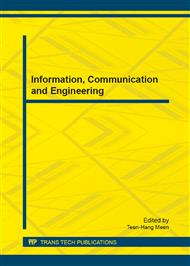p.3
p.9
p.15
p.20
p.26
p.32
p.37
p.43
p.49
Request Redirection Policy Based on Service Utility in CDN
Abstract:
To quantify the service utility of CDN, some metrics is developed to measure its content-serving utility. The quantitative measure can provide an indication of the perceived benefits of CDN system and express the service effectiveness of each replica server. The utility measure is used to devise a request-redirection policy and conduct extensive simulations to demonstrate that the approach can improve content delivery performance in CDN.
Info:
Periodical:
Pages:
26-31
Citation:
Online since:
February 2013
Authors:
Price:
Сopyright:
© 2013 Trans Tech Publications Ltd. All Rights Reserved
Share:
Citation:


